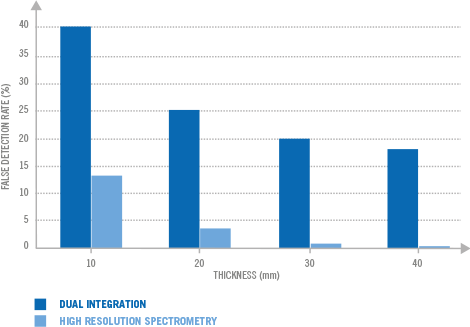
Home Technology Material discrimination
Material discrimination
The availability of this high quality spectrum opens new doors in terms of data processing, algorithms and methods to improve the material discrimination along with image quality.
Most current x-ray sensing technologies are only capable of roughly distinguishing between two energy bands, thereby severely reducing their ability to measure the main material discriminators (effective atomic number, Zeff) which limits the system’s ability to make a distinction between the basic classes of material: organic materials, inorganic materials and metals.
MultiX develops proprietary algorithms and methods that improve the precision and robustness of material features determination, better precision in Zeff, as well as material recovery when it comes to overlapping objects in the image.
These improvements benefit the probability of correct identification of material as depicted beside in a simple case run in laboratory.
Article
“Comparing performances of a CdTe X-ray spectroscopic detector and an X-ray dual-energy sandwich detector." Journal of Instrumentation 8(11): P11011.

Relative improvement in FDR between ME-90 Energy bins(dark blue) and DE(light blue) on a set of single materials from CHON explosive region vs. material thickness. Of course the benefit shown here for some selected materials applies for food, waste, mining or any other application.